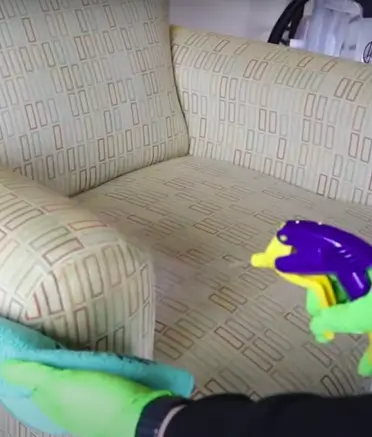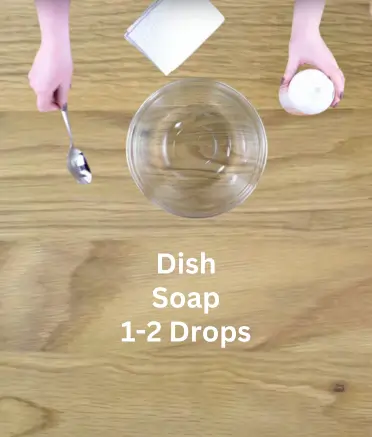
Maintaining clean upholstery is essential for a healthy and inviting home environment. Whether you’re a homeowner, a pet owner, or an interior design enthusiast, knowing how to clean your cloth couch and cushions can make a world of difference in the appearance and Resilience of your furniture. This guide provides valuable insights, practical tips, and step-by-step instructions on keeping your upholstery looking its best. From understanding different upholstery materials to mastering DIY cleaning techniques, you’ll find everything you need right here.
Introduction
Keeping your upholstery clean goes beyond aesthetics; it plays a crucial role in maintaining a healthy living space. Dirty upholstery can harbor allergens, dust mites, and bacteria, negatively impacting your home’s air quality and your family’s health. Regular cleaning not only enhances the appearance of your furniture but also prolongs its lifespan, making it a worthwhile investment.
Common Upholstery Materials and Their Cleaning Requirements
Understanding the type of upholstery you have is the first step toward effective cleaning. Different materials require different cleaning methods to avoid damage and achieve optimal results.
Fabric Upholstery:
Fabric upholstery, including your cloth couch and cushions, is one of the most common types found in homes. Materials like cotton, linen, polyester, and microfiber each have unique characteristics and cleaning needs.
Cotton and Linen: Use a mild detergent mixed with water for spot cleaning. Avoid excessive moisture to prevent fabric shrinkage.
Polyester and Microfiber: A mixture of water and a small amount of dishwashing liquid works well for general cleaning.

Leather Upholstery:
Leather upholstery adds a touch of luxury to any home. For genuine leather, use a leather cleaner and conditioner to maintain its natural shine and prevent cracking. Avoid using water, as it can damage the leather. Faux leather can be cleaned with a mixture of water and mild soap.
Velvet Upholstery:
Velvet upholstery is elegant and soft but requires gentle cleaning to avoid damaging the delicate fibers. Use a vacuum with a soft brush attachment to remove dust and dirt.
Essential Steps for Upholstery Cleaning
Cleaning your upholstery yourself can be straightforward if you follow these essential steps:
Step 1: Preparing the Area and Identifying Stains
Before starting, prepare your cleaning tools, including a bucket, brush, and eraser for tougher stains.
- Remove Loose Debris: Use a vacuum cleaner with an upholstery attachment.
- Spot Test: Test a small, inconspicuous area with your cleaning solution.
- Identify Stains: Determine the type of stains you need to address.
Step 2: Choosing the Right Cleaning Solutions
Selecting the appropriate cleaning solutions is crucial for effective upholstery cleaning.
- Homemade Solutions: Mix equal parts water and white vinegar, adding a few drops of essential oil for a natural scent.
- Store-Bought Cleaners: Various cleaners are available for different materials. Follow the manufacturer’s instructions.
Step 3: Drying and Post-Cleaning Care
After cleaning, ensure proper drying to prevent mold and mildew growth. Open windows or use a fan to facilitate air circulation. Fluff your cushions to restore their shape.
Special Considerations for Pet Owners
Pet owners face unique challenges when maintaining clean upholstery, such as dealing with hair and odors.
- Removing Pet Hair: Use lint rollers or adhesive tape to pick up hair from the surface.
- Odor Removal: Sprinkle baking soda on your upholstery, let it sit for 15 minutes, then vacuum.
Upholstery Cleaning Do’s and Don’ts
Following best practices and avoiding common mistakes can significantly improve your upholstery cleaning efforts:
- Do Vacuum Regularly: Weekly vacuuming prevents dirt buildup.
- Don’t Use Excessive Water: Avoid saturating the fabric with water to prevent mold growth.
- Do Spot Test: Always test your cleaning solution in an inconspicuous area first.
Upholstery Maintenance Tips for a Long-Lasting Clean
Regular maintenance is key to keeping your upholstery looking new and fresh.
- Weekly Vacuuming: Keep your cloth couch and cushions dirt-free.
- Use Throws and Covers: Protect high-traffic areas with washable throws.
- Professional Cleaning: Consider hiring professionals for deep cleaning, especially for carpet cleaning and drapes.
FAQ’s
What is the best homemade upholstery cleaner?
The best homemade upholstery cleaner is a mixture of equal parts water and white vinegar with a few drops of mild dish soap. This solution effectively tackles stains and odors on most fabrics.
How do you clean dirty upholstery fabric?
To clean dirty upholstery fabric, start by vacuuming to remove loose debris. Then, spot clean stains with a solution of water and mild dish soap or vinegar, and blot with a damp cloth to remove residues.
What is the best way to clean a fabric sofa?
The best way to clean a fabric sofa involves regular vacuuming to remove dust and crumbs, prompt spot cleaning with a water and soap solution, and occasional deep cleaning with a steam cleaner.
Can you use Fairy Liquid to clean upholstery?
Yes, Fairy Liquid can be used to clean upholstery if diluted with water and tested on a small, hidden area first. Ensure to blot away any soap residue and allow the fabric to air dry.
Conclusion:
Maintaining clean upholstery is essential for a healthy home environment. By following these tips and techniques, you can ensure your furniture remains fresh, inviting, and long-lasting. Regular cleaning not only enhances the appearance of your furniture but also contributes to a healthier home environment.
